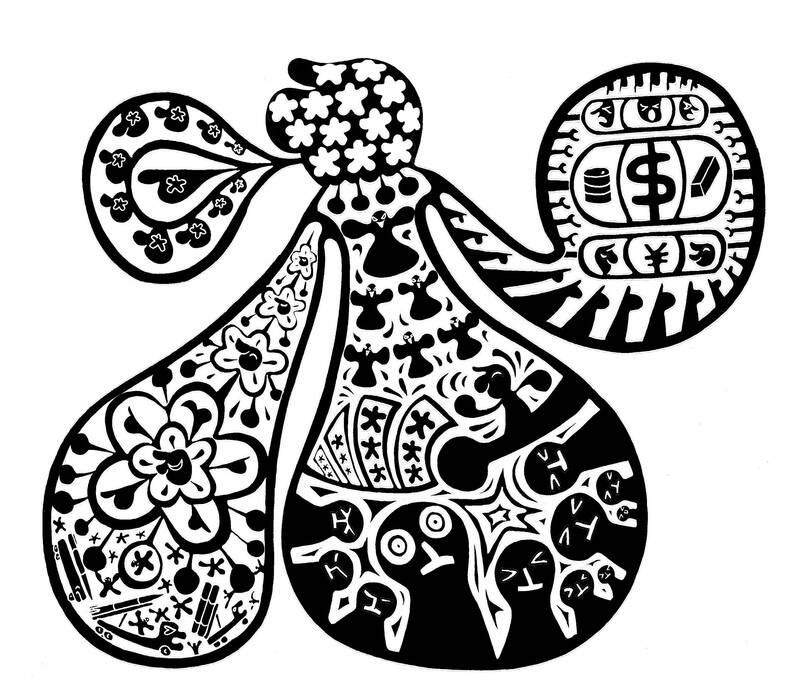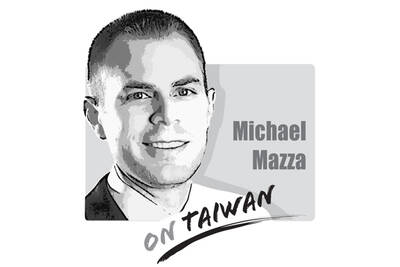Nearly six months into US President Donald Trump’s presidency, a “Trump Doctrine” is coming into view. Contrary to the fears of his critics, and the hopes of some admirers, Trump is no isolationist. And contrary to those who claim Trump is simply a marvel of ad hoc-ery and inconsistency, there is a distinctive pattern to the policies he has pursued.
This Trump Doctrine emphasizes using US power aggressively — more aggressively than Trump’s immediate predecessors — to reshape key relationships and accrue US advantage in a rivalrous world. In doing so, Trump has blown up any talk about a post-US era. Yet he has also raised troubling questions about whether his administration can wield the US’ outsized influence effectively and keep it strong.
The isolationist label has long followed Trump, but it has never accurately described an idiosyncratic man. Yes, Trump disdains core elements of US globalism, from the international trade system the US established to its promotion of democratic values and its defense commitments around the world. Yet Trump has also said that the US should assert itself more forcefully in a cutthroat world. And today, as Trump pursues a capacious view of presidential power at home, he is offering an equally ambitious conception of US power abroad.

Illustration: Mountain People
Trump rails against long, costly nation-building efforts. However, he has nonetheless waged two short, sharp Middle Eastern conflicts: one to deter Yemen’s Houthis from attacking US forces and Red Sea shipping, the other to roll back the Iranian nuclear program. Several US presidents pledged to use force to keep Tehran from crossing the nuclear threshold; Trump really did it. That is not the policy of a man in thrall to the US Republican Party’s Tucker Carlson wing.
Meanwhile, Trump started trade wars against dozens of countries, in hopes of reshaping the international economy. He deployed diplomatic leverage, and explicit threats of abandonment, to remake the transatlantic bargain by getting European allies to spend much more on defense. Trump also wielded the US’ innovation power — its role in designing high-end semiconductors — to bring Saudi Arabia and the United Arab Emirates into Washington’s tech bloc and make them partners in his push for “artificial intelligence dominance.”
Closer to home, Trump used veiled threats to pry Panama out of China’s Belt and Road Initiative. He has demanded territorial concessions from Panama, Denmark and Canada. At the same time, Trump touts his Golden Dome missile shield, meant to protect the homeland and give the US greater freedom of action against its foes.
This is not standard-issue, post-1945 US internationalism: It is hard to imagine prior presidents telling allies to yield their land. However, neither is it a retreat into “Fortress America.” And by applying US power in such energetic, omnidirectional fashion, Trump has revealed much about the true state of world affairs.
Policy journals brim with articles about US decline and the advent of multipolarity. However, Trump, in his inimitable way, has reminded so many countries where power really lies. For example: The strike on Iran demonstrated the US’ unique global military reach and its ability, together with Israel, to reshape the Middle East while relegating Russia and China — nominally Iran’s allies — to the sidelines.
Trump’s key insight is that the world’s sole superpower has more muscle than commonly understood. Yet the Trump Doctrine nonetheless has three big problems.
First, its exercise of power is weakened by its dearth of strategy. Trump’s trade war got off to a farcical start, because he failed to consider how sky-high tariffs might wreck the US economy — a real-time discovery that forced a rapid, humiliating climb down. A president who privileges the art of the deal over intellectual consistency sometimes pursues contradictory policies: Trump’s tariffs against Indo-Pacific allies erode their prosperity and make it harder for them to spend more on defense.
Second, a president who sometimes struggles to distinguish friends from enemies sometimes fails to point US power in the right direction. Trump delights in taking aim at US allies. He has been more reluctant to confront Russia, even as Russian President Vladimir Putin makes a mockery of Trump’s desire for peace in Ukraine — and even though Putin’s war economy is increasingly vulnerable to the commercial and financial coercion that Trump so often threatens to employ.
Third, the best presidents build US power for the future, but Trump risks depleting it instead. Maybe the “One Big Beautiful Bill” would juice the economy — or maybe it would lock in structural deficits that constrain defense spending and growth. Slashing foreign aid saves little money, but squanders US global influence; the war on universities threatens the research ecosystem that underpins the US’ economic and military might. Moreover, a policy of tough love toward allies could turn into mutually destructive hostility, and a superpower that regularly coerces its friends could wreck the soft power that lubricates key relationships.
Trump revels in using US power, but he does not quite understand where it comes from. That is the central irony, and fundamental weakness, of the doctrine guiding his administration today.
Hal Brands is a Bloomberg Opinion columnist and the Henry Kissinger distinguished professor at Johns Hopkins University’s School of Advanced International Studies. He is also a senior fellow at the American Enterprise Institute, coauthor of Danger Zone: The Coming Conflict with China and a senior adviser to Macro Advisory Partners. This column reflects the personal views of the author and does not necessarily reflect the opinion of the editorial board or Bloomberg LP and its owners.

Taiwan has lost Trump. Or so a former State Department official and lobbyist would have us believe. Writing for online outlet Domino Theory in an article titled “How Taiwan lost Trump,” Christian Whiton provides a litany of reasons that the William Lai (賴清德) and Donald Trump administrations have supposedly fallen out — and it’s all Lai’s fault. Although many of Whiton’s claims are misleading or ill-informed, the article is helpfully, if unintentionally, revealing of a key aspect of the MAGA worldview. Whiton complains of the ruling Democratic Progressive Party’s “inability to understand and relate to the New Right in America.” Many
US lobbyist Christian Whiton has published an update to his article, “How Taiwan Lost Trump,” discussed on the editorial page on Sunday. His new article, titled “What Taiwan Should Do” refers to the three articles published in the Taipei Times, saying that none had offered a solution to the problems he identified. That is fair. The articles pushed back on points Whiton made that were felt partisan, misdirected or uninformed; in this response, he offers solutions of his own. While many are on point and he would find no disagreement here, the nuances of the political and historical complexities in
Taiwan faces an image challenge even among its allies, as it must constantly counter falsehoods and misrepresentations spread by its more powerful neighbor, the People’s Republic of China (PRC). While Taiwan refrains from disparaging its troublesome neighbor to other countries, the PRC is working not only to forge a narrative about itself, its intentions and value to the international community, but is also spreading lies about Taiwan. Governments, parliamentary groups and civil societies worldwide are caught in this narrative tug-of-war, each responding in their own way. National governments have the power to push back against what they know to be
Taiwan is to hold a referendum on Saturday next week to decide whether the Ma-anshan Nuclear Power Plant, which was shut down in May after 40 years of service, should restart operations for as long as another 20 years. The referendum was proposed by the opposition Taiwan People’s Party (TPP) and passed in the legislature with support from the opposition Chinese Nationalist Party (KMT). Its question reads: “Do you agree that the Ma-anshan Nuclear Power Plant should continue operations upon approval by the competent authority and confirmation that there are no safety concerns?” Supporters of the proposal argue that nuclear power